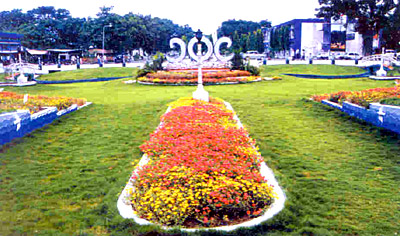 Barauni IOC Township is a census town situated in the Begusarai district in the state of Bihar in India. The state of Bihar has a total of thirty-seven districts, and the Begusarai district is one of them. The administrative headquarters of this district are located in the Begusarai town. The district is a part of the Darbhanga division. It was set up in 1870 as a subdivision of the district of Munger. However, Begusarai was given district status in the year 1972. The name of the district is in fact derived from Begu, a man who looked after Sarai, an old and small tavern. The exact geographical location of the district is between the latitudes 25.15 degrees North and 25.45 degrees north and between the longitudes 85.45 degrees East and 86.36 degrees east. It covers a total area of 1918.0 square km and has a total population of 23,429,89. The population density is 1222 persons per square km. There are 5 sub -divisions in the district, namely Manjhaul, Bakhari, Begusarai, Ballia and Teghara. There are 18 blocks in all. The kharif crops grown there are Paddy, Arahar and Urad while the Rabi crops are Wheat, Gram, Macca, Masur, Mustard, Tisi, Mater and Sunflower. The cash crops include potato, oilseeds, jute, tobacco, red chilies, tomato and andi. Barauni IOC Township has an oil refinery and a thermal power station. Besides these there are also hundreds of small industrial units in the private sector. The rivers flowing through this district are Ganga, Balan, Bainty, Burhi Gandak, Baya and Chandrabhaga. In the district is situated the Kaver Jheel, one of Asia`s largest fresh water lake. There is also a notable bird sanctuary. Other distinctive features of this district are the bridge across Ganges at Barauni, a resting spot for migratory birds and the industrial complex at Barauni.
Barauni IOC Township is a census town situated in the Begusarai district in the state of Bihar in India. The state of Bihar has a total of thirty-seven districts, and the Begusarai district is one of them. The administrative headquarters of this district are located in the Begusarai town. The district is a part of the Darbhanga division. It was set up in 1870 as a subdivision of the district of Munger. However, Begusarai was given district status in the year 1972. The name of the district is in fact derived from Begu, a man who looked after Sarai, an old and small tavern. The exact geographical location of the district is between the latitudes 25.15 degrees North and 25.45 degrees north and between the longitudes 85.45 degrees East and 86.36 degrees east. It covers a total area of 1918.0 square km and has a total population of 23,429,89. The population density is 1222 persons per square km. There are 5 sub -divisions in the district, namely Manjhaul, Bakhari, Begusarai, Ballia and Teghara. There are 18 blocks in all. The kharif crops grown there are Paddy, Arahar and Urad while the Rabi crops are Wheat, Gram, Macca, Masur, Mustard, Tisi, Mater and Sunflower. The cash crops include potato, oilseeds, jute, tobacco, red chilies, tomato and andi. Barauni IOC Township has an oil refinery and a thermal power station. Besides these there are also hundreds of small industrial units in the private sector. The rivers flowing through this district are Ganga, Balan, Bainty, Burhi Gandak, Baya and Chandrabhaga. In the district is situated the Kaver Jheel, one of Asia`s largest fresh water lake. There is also a notable bird sanctuary. Other distinctive features of this district are the bridge across Ganges at Barauni, a resting spot for migratory birds and the industrial complex at Barauni.
According to the 2001 India census, Barauni IOC Township has a population of 13,825. Males make up 55% of the population and females constitute 45%. On an average, 77% of the people of Barauni IOC Township are literate. This literacy rate is higher than the national average of 59.5%. 58% of the males and 42% of the females are literate. 13% of the population is children below six years of age.



















